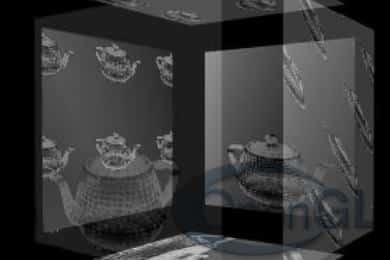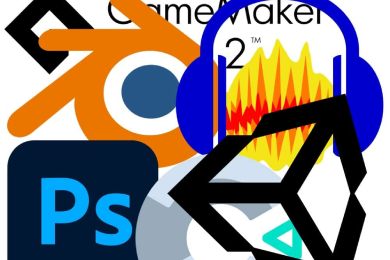When the first OpenGL version was released in 1991, it quickly became the standard for graphics rendering. OpenGL has been widely adopted and continues to be a relevant API for creating 3D graphics today.
Even with the release of new graphics APIs like Apple’s Metal, DirectX 12, and Vulkan, OpenGL remains a common standard for game developers. With that said, there are performance improvements to be gained from switching to newer APIs like Vulkan.
OpenGL and Vulkan are cross-platform APIs that focus on 2D and 3D vector graphics. Both are free and open source, and both are designed for a range of platforms. OpenGL is the older API, while Vulkan is a newer, cross-platform API designed for the latest and greatest GPUs. Vulkan also provides more control over memory management, which OpenGL does not.
In this article, we explain the primary differences between Vulkan and OpenGL. If you’re an experienced programmer looking to learn about either of these APIs in more detail, we also offer some helpful resources at the end of this article.
What is OpenGL?
OpenGL is a graphics API that is implemented in almost every device, from game consoles to PCs. It is also used in a variety of other fields such as architecture, product design, and film. OpenGL was initially developed by Silicon Graphics in 1991. While Silicon Graphics was bought by Sun Microsystems in 2002, the OpenGL API continues to be maintained by the Khronos Group.

OpenGL allows an application to create 2D and 3D visuals that can be rendered on a device’s GPU. The goal of the OpenGL API is to provide an interface between the application and the graphics hardware. The application uses the API to specify what should be rendered and how it should be rendered on the screen.
The API then translates these instructions and passes them to the graphics hardware. The graphics hardware then processes and renders the scene.
What is Vulkan?
Vulkan is a low-level graphics API created primarily for 3D rendering. It was developed by The Khronos Group, the same group that manages the OpenGL API. Vulkan was released as the successor to OpenGL and is now supported by many modern computer systems.
The goal of Vulkan is to increase the performance of graphics rendering in general-purpose computing. It does this by providing a low-level API that is more efficient than the previous APIs like OpenGL. Vulkan also strives to be more open and flexible than previous APIs. It was built with constraints and guidelines in order to ensure that it could be used in a wide variety of devices.
Vulkan is only available on a few operating systems, including Android and Windows. However, since it is open source, it is possible that Vulkan will be used in new devices in the future.
How are OpenGL and Vulkan Different?
The key differences between OpenGL and Vulkan are in the way they manage the GPU.
In general, OpenGL is a high-level API, while Vulkan is a low-level API. This means that OpenGL works on a higher level of abstraction, while Vulkan works on a lower level. OpenGL allows the programmer to “ask” the computer to do something, but Vulkan allows the programmer to “tell” the computer to do something.
This also means that Vulkan is a more direct API than OpenGL. It’s easier to control the hardware with Vulkan than it is with OpenGL.
OpenGL puts more pressure on the CPU while Vulkan allows for direct control over the GPU. Vulkan’s direct control over the GPU helps reduce the CPU load and overall power consumption. Vulkan also provides a unified API for desktop, mobile, and console applications.
Vulkan and OpenGL share many of the same characteristics, but they differ in how they handle memory. In OpenGL, the device driver is responsible for memory coherency, while in Vulkan, the application is responsible for managing memory resources. This means that Vulkan can reduce the load on the graphics driver’s CPU and allows applications to control the memory resources more efficiently.
OpenGL uses a heavily typed object model. This model tightly couples the logical resource with physical memory. For example, OpenGL needs a lot of intermediate storage for frame buffer attachments. Vulkan allows applications to reuse the same physical memory for multiple resources.
Vulkan Expected Performance Benefits
There are a few key advantages to using Vulkan over OpenGL. First, since Vulkan is a lower-level API, it requires fewer instructions than OpenGL because it is a more direct API to the GPU, which means that it can be less resource-intensive and more efficient than OpenGL.
OpenGL works on a higher level of abstraction, so it has to “interpret” and “translate” the programmer’s instructions before it can pass them to the GPU. This can lead to inefficiencies, as the GPU may need to wait for the CPU to finish “interpreting” the instructions. Since Vulkan is a lower-level API, it is more direct and does not rely on an “interpreter.” Thus, there is less latency between the CPU and GPU.

Compared to OpenGL, Vulkan can handle higher frame rates and save 24% of energy. However, it is still not easy to write efficient Vulkan code. In light workloads, the gains are negligible.
OpenGL vs Vulkan Conclusion
Overall, OpenGL and Vulkan are both great APIs.
They both provide high-quality graphics and are useful for a variety of industries. However, there are key differences between the two.
Vulkan is a low-level API, while OpenGL is a high-level API. Vulkan is designed for 3D rendering, while OpenGL is designed for 2D rendering. Vulkan is also designed to be a more efficient API than OpenGL. It is designed to be less resource-intensive and more direct. These qualities make Vulkan an ideal graphics API for 3D rendering.
Finally, OpenGL is widely used, and Vulkan is still a relatively new API. While Vulkan is widely used in video games, it is not as widely used across different industries as OpenGL is.
What graphics library do you use in your projects? Let us know in our Discord!
